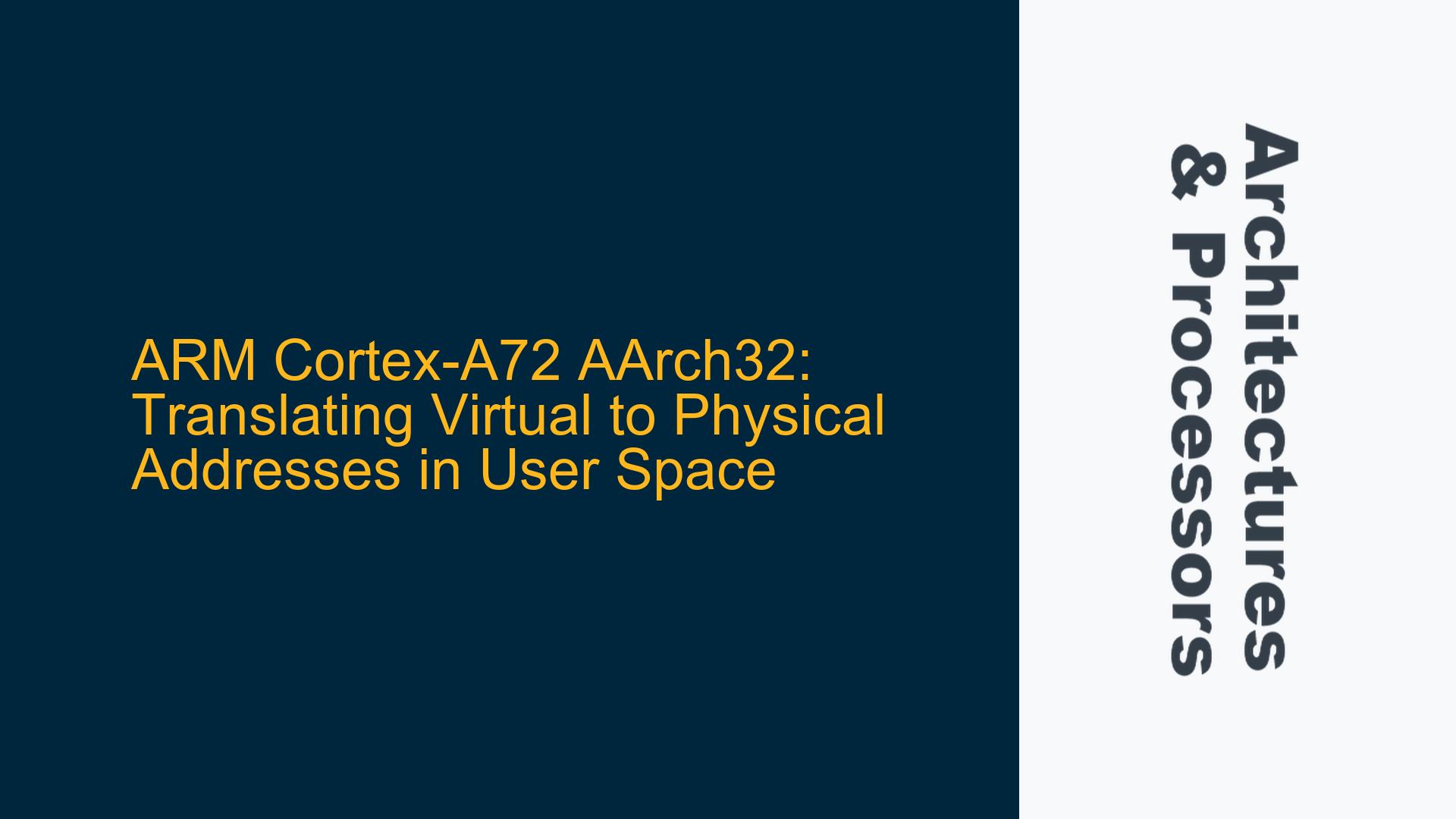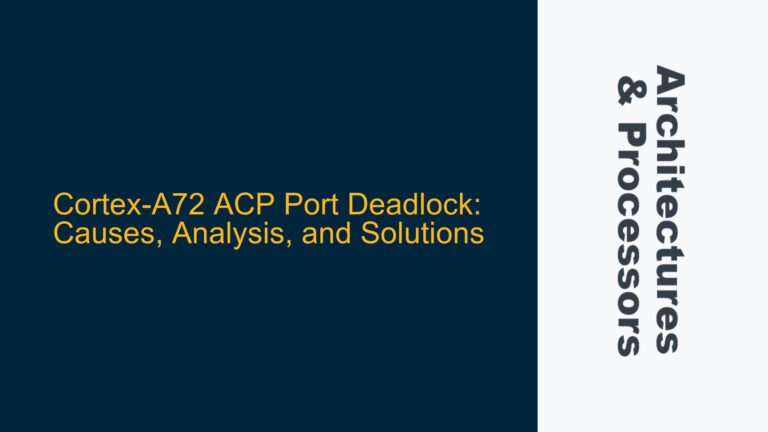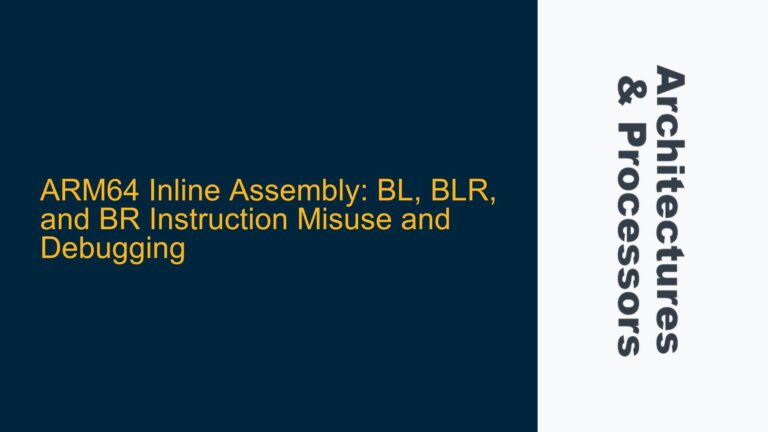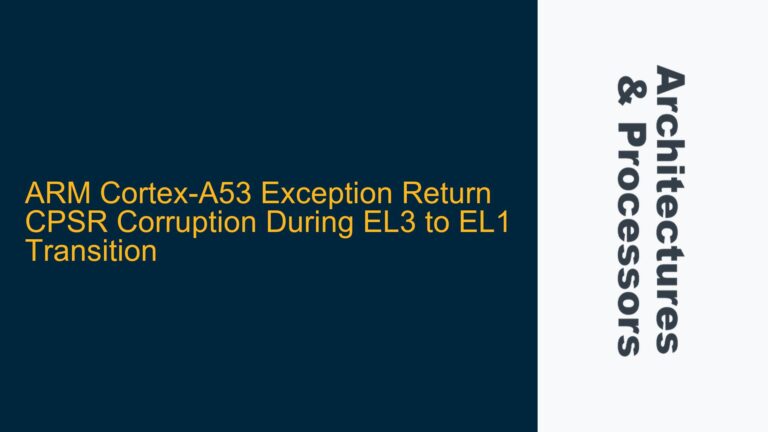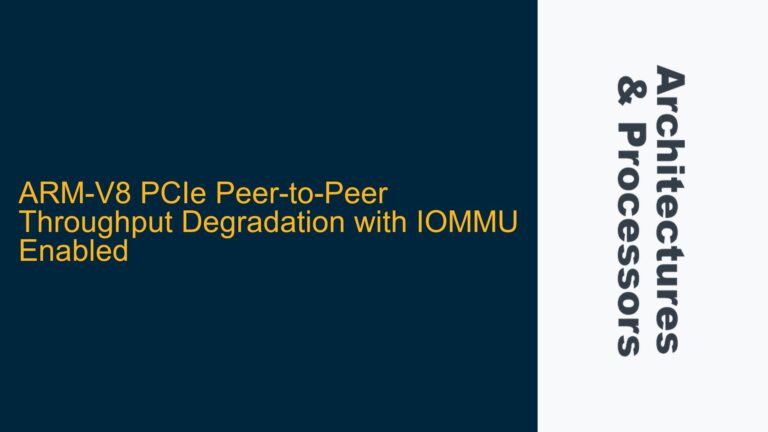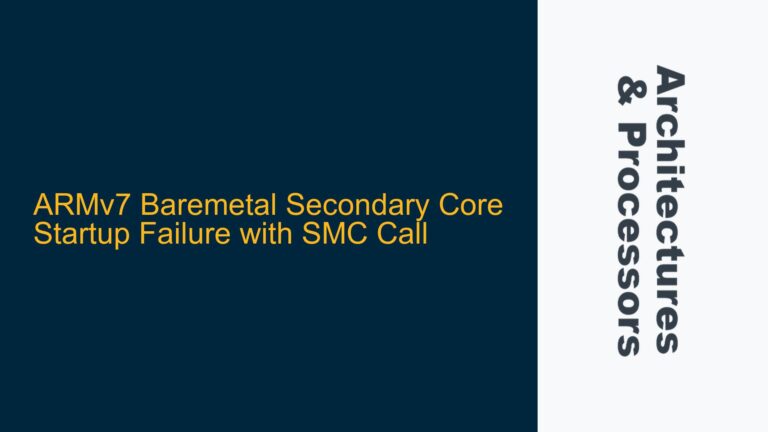ARM Cortex-A72 AArch32 Virtual-to-Physical Address Translation Challenges
The ARM Cortex-A72 processor, when operating in AArch32 mode, presents a unique set of challenges when attempting to translate virtual addresses to physical addresses, particularly in user space. The Cortex-A72, part of ARM’s Cortex-A series, is a high-performance processor that supports both AArch32 and AArch64 execution states. In AArch32 mode, the processor uses a 32-bit virtual address space, but the physical address space can extend up to 40 bits. This discrepancy between virtual and physical address spaces necessitates a robust mechanism for address translation, which is typically handled by the Memory Management Unit (MMU) through a multi-level page table structure.
The primary issue at hand is the translation of a virtual address to its corresponding physical address in user space. This is particularly important for debugging, memory region identification, and performance optimization. The virtual address space in AArch32 is divided into user and kernel spaces, with the user space typically ranging from 0x00000000 to 0xBFFFFFFF. The kernel space, on the other hand, occupies the upper portion of the address space. The translation process involves traversing the page tables, which are hierarchical structures that map virtual addresses to physical addresses. The Cortex-A72 uses a two-level page table structure in AArch32 mode, consisting of Level 1 (L1) and Level 2 (L2) page tables.
The L1 page table, also known as the Page Directory, contains entries that either point to L2 page tables or directly to physical memory pages. Each entry in the L1 page table is 4 bytes in size and can either be a section entry, which maps a 1MB section of memory, or a page table entry, which points to an L2 page table. The L2 page table, in turn, contains entries that map 4KB or 64KB pages of memory. The translation process begins with the MMU using the upper bits of the virtual address to index into the L1 page table. Depending on the type of entry found, the MMU will either use the entry to directly access physical memory or will use it to index into the L2 page table.
One of the key challenges in this process is the need to access the page tables themselves. In kernel space, the virt_to_phys function can be used to translate kernel virtual addresses to physical addresses. However, this function is not available in user space, where applications typically do not have direct access to the page tables. This limitation necessitates alternative methods for translating virtual addresses to physical addresses in user space, which can be complex and require a deep understanding of the ARM architecture.
Page Table Traversal and Memory Region Identification in AArch32
The process of translating a virtual address to a physical address in AArch32 involves traversing the page tables, which are hierarchical structures that map virtual addresses to physical addresses. The Cortex-A72 uses a two-level page table structure in AArch32 mode, consisting of Level 1 (L1) and Level 2 (L2) page tables. The L1 page table, also known as the Page Directory, contains entries that either point to L2 page tables or directly to physical memory pages. Each entry in the L1 page table is 4 bytes in size and can either be a section entry, which maps a 1MB section of memory, or a page table entry, which points to an L2 page table.
The L2 page table, in turn, contains entries that map 4KB or 64KB pages of memory. The translation process begins with the MMU using the upper bits of the virtual address to index into the L1 page table. Depending on the type of entry found, the MMU will either use the entry to directly access physical memory or will use it to index into the L2 page table. The L2 page table entry will then provide the base address of the physical memory page, and the lower bits of the virtual address will be used as an offset within that page to access the specific physical address.
In user space, the challenge is that applications do not have direct access to the page tables. This is a security feature designed to prevent user applications from accessing or modifying the memory mappings of other processes or the kernel. However, this also means that user space applications cannot directly traverse the page tables to translate virtual addresses to physical addresses. Instead, user space applications must rely on system calls or other mechanisms provided by the operating system to perform this translation.
One approach to translating virtual addresses to physical addresses in user space is to use the /proc/self/pagemap interface provided by the Linux kernel. This interface allows user space applications to query the physical address corresponding to a given virtual address. The /proc/self/pagemap file contains a mapping of virtual addresses to physical addresses for the calling process. Each entry in the pagemap file is 8 bytes in size and contains information about the physical page corresponding to the virtual address, including the physical page frame number (PFN).
To use the /proc/self/pagemap interface, a user space application must first open the /proc/self/pagemap file and then seek to the entry corresponding to the virtual address of interest. The application can then read the 8-byte entry and extract the PFN. The physical address can then be calculated by multiplying the PFN by the page size (typically 4KB) and adding the offset within the page.
Another approach is to use the mmap system call to map a portion of the /dev/mem device into the application’s address space. The /dev/mem device provides access to the physical memory of the system, and by mapping a portion of this device into the application’s address space, the application can directly access physical memory. However, this approach requires root privileges and is generally not recommended due to the security risks associated with direct access to physical memory.
Implementing Virtual-to-Physical Address Translation in User Space on ARM Cortex-A72
Implementing virtual-to-physical address translation in user space on the ARM Cortex-A72 requires a combination of system calls, memory mapping, and careful handling of the page tables. The process begins with the application obtaining the virtual address that needs to be translated. This virtual address is typically obtained through normal memory allocation routines, such as malloc or mmap. Once the virtual address is obtained, the application must determine the corresponding physical address.
One method for performing this translation is to use the /proc/self/pagemap interface provided by the Linux kernel. This interface allows user space applications to query the physical address corresponding to a given virtual address. The /proc/self/pagemap file contains a mapping of virtual addresses to physical addresses for the calling process. Each entry in the pagemap file is 8 bytes in size and contains information about the physical page corresponding to the virtual address, including the physical page frame number (PFN).
To use the /proc/self/pagemap interface, the application must first open the /proc/self/pagemap file using the open system call. The application must then seek to the entry corresponding to the virtual address of interest. The offset within the pagemap file can be calculated by dividing the virtual address by the page size (typically 4KB) and multiplying by the size of each pagemap entry (8 bytes). The application can then read the 8-byte entry using the read system call.
The 8-byte entry contains the PFN, which can be extracted by masking out the lower bits of the entry. The physical address can then be calculated by multiplying the PFN by the page size and adding the offset within the page. The offset within the page can be obtained by taking the lower 12 bits of the virtual address (for a 4KB page size).
Another method for performing virtual-to-physical address translation in user space is to use the mmap system call to map a portion of the /dev/mem device into the application’s address space. The /dev/mem device provides access to the physical memory of the system, and by mapping a portion of this device into the application’s address space, the application can directly access physical memory. However, this approach requires root privileges and is generally not recommended due to the security risks associated with direct access to physical memory.
To use the /dev/mem device, the application must first open the device using the open system call. The application must then use the mmap system call to map a portion of the device into its address space. The mmap system call requires the application to specify the size of the mapping, the protection flags, and the offset within the /dev/mem device. The offset within the /dev/mem device corresponds to the physical address that the application wishes to access.
Once the mapping is established, the application can access the physical memory directly through the mapped region. However, care must be taken to ensure that the application does not access memory outside of the mapped region, as this could result in a segmentation fault or other undefined behavior.
In conclusion, translating virtual addresses to physical addresses in user space on the ARM Cortex-A72 requires a deep understanding of the ARM architecture, the Linux kernel, and the mechanisms provided by the operating system for memory management. By using the /proc/self/pagemap interface or the /dev/mem device, user space applications can perform this translation, but care must be taken to ensure that the process is secure and does not compromise the stability of the system.
